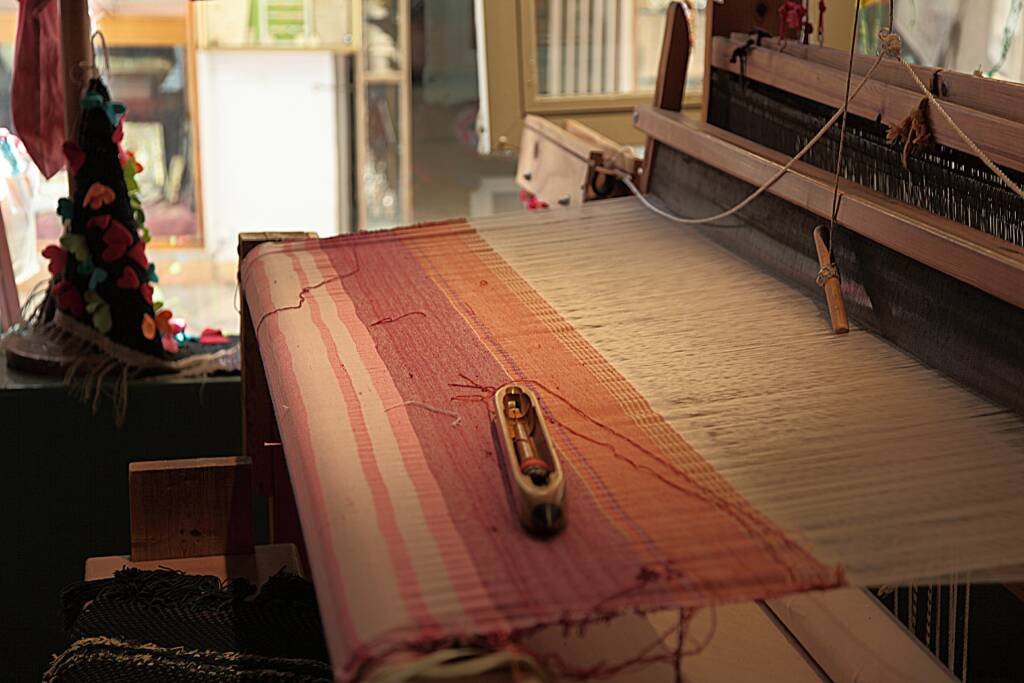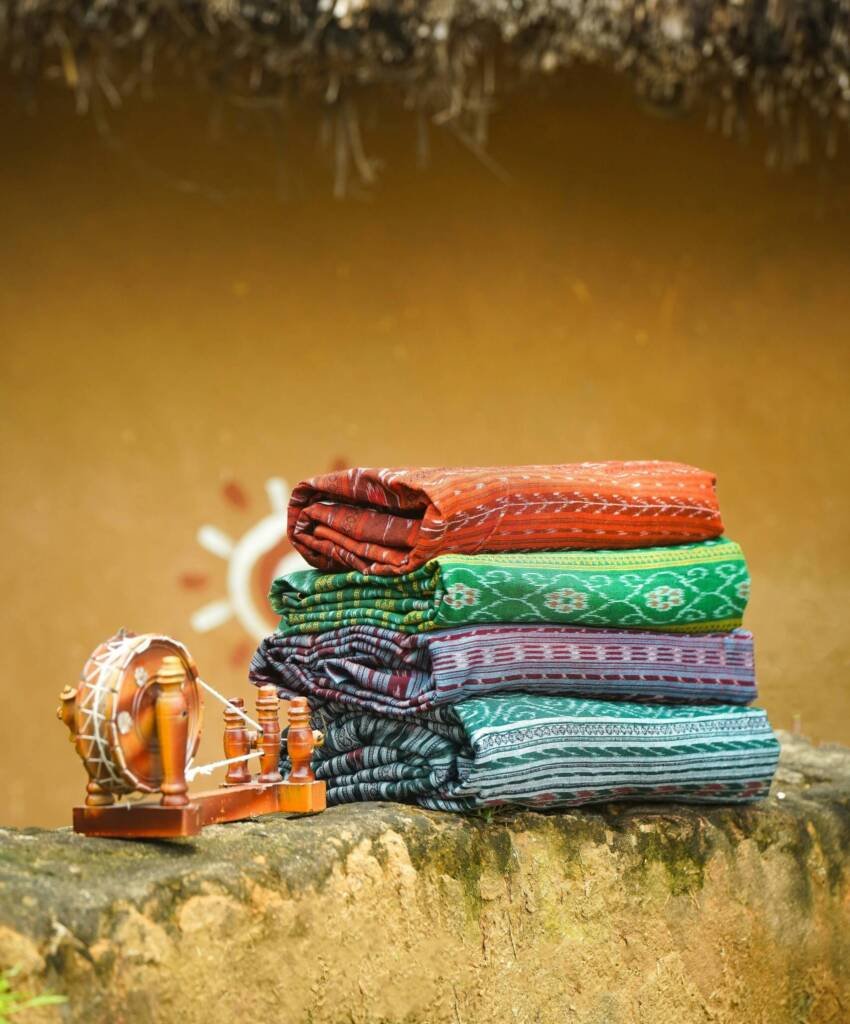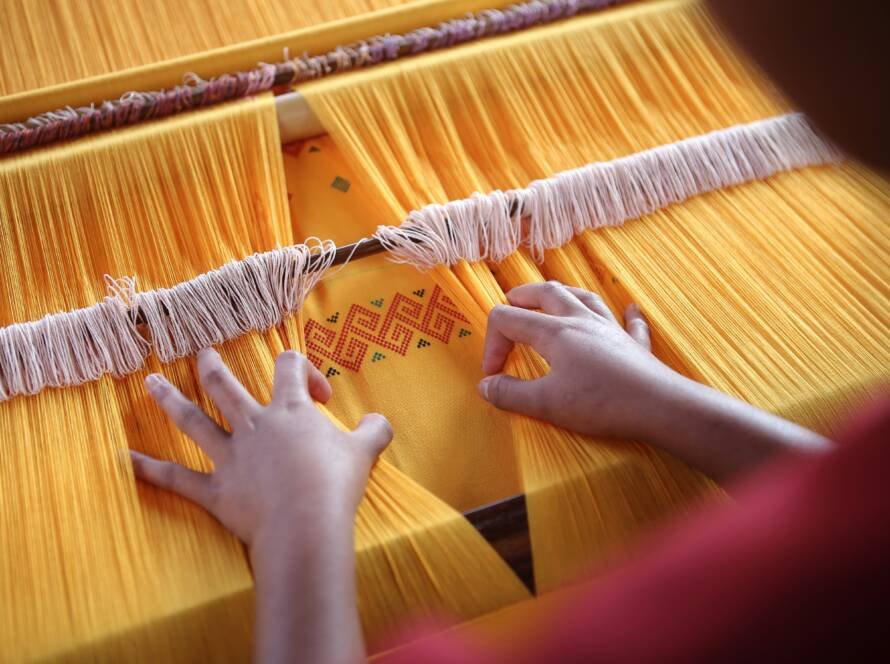The Journey of Touch, Texture & Technique
A Thread of Memory: Where Learning Begins with a Feeling
In a quiet classroom bathed in the warmth of morning light, a child gently touches a piece of handwoven cloth. It is not just cotton or silk beneath their fingers—it is heritage. In that single, silent moment, they are not just learning; they are remembering. The soft resistance of warp and weft becomes a portal to forgotten stories, ancestral rhythms, and a culture lovingly passed down through threads.
India’s handloom is not just a craft—it is a soul memory, woven with stories, struggles, rituals, and resilience. And yet, in our fast-moving world, it has been pushed to the margins of modern education. The question is: how do we bring it back where it belongs? Perhaps the answer lies in reintroducing it to where foundations are laid—in our schools.
Handloom: India’s Woven Identity
Handloom in India is more than an industry—it is an embodiment of geography, philosophy, and soul. Every weave carries with it the landscape it was born in, the beliefs it was soaked in, and the spirit it was shaped by. From the sacred purity of Khadi, spun during India’s freedom movement, to the delicate translucence of Chanderi and the vibrant, geometric poetry of Pochampally—these fabrics are not just textiles. They are testaments.
They embody patience, discipline, design thinking, and spiritual expression. To bring handloom into schools is to reintroduce our children to their cultural DNA. It is to awaken a sense of rootedness that textbooks alone cannot offer.


Beyond the Loom: Learning Through Touch and Technique
Imagine a classroom where learning is not limited to whiteboards and screens. In one corner sits a loom, threads stretched like a rainbow of patience. Children don’t just learn about “ikat” or “dobby”—they watch it unfold, tie by tie, pattern by pattern. They touch, observe, and even try weaving. They learn not only how to make—but how to respect what is made.
Such tactile, sensory experiences cultivate focus, perseverance, and awe. In the act of weaving, children begin to understand the quiet dignity of handwork, the harmony of precision and imagination, and the beauty of slowness in a fast world.
Story in Every Stitch: Cultural Contexts and Regional Resonance
Behind every weave lies a tale. Maheshwari’s motifs mimic the ripples of the Narmada. Paithani’s parrots and peacocks speak of courtly grandeur and divine symbolism. Ikat tells stories in abstract geometry—echoes of tribal cosmologies.
When these stories are brought into classrooms, learning becomes layered. History breathes. Geography unfolds. Culture transforms from textbook content into living experience Art is no longer optional—it becomes integral. Students begin to view craft not as a past glory, but as a present inheritance.
Master Weavers as Mentors: Reclaiming Intergenerational Wisdom
Reviving handloom in schools also means reviving respect—for the artisan, for the elder, for the hand. When master weavers enter classrooms as visiting teachers or collaborators, something beautiful happens. Knowledge isn’t delivered—it’s transferred with heart and humility.
These interactions build a bridge between generations, transforming schools into places where tradition meets curiosity, and where a child’s questions meet a weaver’s lived wisdom.
Handloom as Heritage, Handloom as Hope
Reviving handloom is not about preserving the past—it’s about preparing for a more grounded, connected future. In a time of identity crises and cultural dilution, handloom is a reminder of who we are. It celebrates interdependence: of humans and nature, of hands and hearts.
Embedding this wisdom in education is a powerful act. It ensures that our children grow up not just literate, but culturally literate. Not just skilled, but soulful.
A Gentle Invitation
Let our schools become spaces where tradition and innovation co-exist. Let us turn classrooms into spaces of cultural revival. Let the soft hum of looms echo beside science labs, where tactile learning holds as much power as digital tools. Let every child experience the wonder of creating with their hands, and in doing so, touch something far older—and far deeper—than themselves.
Because within every thread lies not just a pattern, but a pulse. A heartbeat of a civilization, waiting to be remembered.
The loom is waiting. So are our stories. Let us pass the shuttle of tradition into young hands—and let them weave the future.



